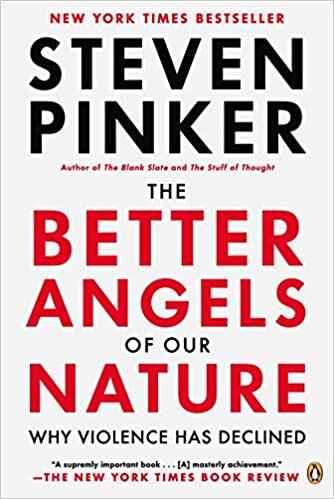Blog • Understanding Publishing
Last updated on Oct 14, 2025
Expository Writing: The Craft of Sharing Information
Dario Villirilli
Editor-in-Chief of the Reedsy blog, Dario is a graduate of Mälardalen University. As a freelance writer, he has written for many esteemed outlets aimed at writers. A traveler at heart, he can be found roaming the world and working from his laptop.
View profile →Expository writing is a form of writing that aims to present information in a factual and objective manner in order to describe a topic. It’s commonly used in academic papers, business reports, encyclopedia articles, and some nonfiction books.
In this article we’ll take a closer look at the characteristics of expository writing and provide some examples of how it is used. Let’s dive in.
It's a type of writing that informs and educates

Unlike creative writing, which aims, broadly speaking, to entertain, the purpose of expository writing is to inform and educate readers about a particular subject by presenting accurate information in a clear manner. For this purpose, the writing style should be neutral and objective, and information should only come from reliable and citable sources.
Of course, telling the truth, the whole truth, and nothing but the truth can be a daunting (if not impossible) task. Even the most rigorous scientists, journalists, and authors sometimes end up referencing inaccurate data, or inadvertently fall back on their biases when presenting their research.
In general, expository writing aims to avoid expressing personal opinions and using flowery language or literary devices that may leave things open for interpretation. At the same time, readers should know that there is no such thing as a purely objective account and always consider an author’s potential biases and shortcomings.
You’ll find it in textbooks, reports, and manuals
Expository writing can be used in various contexts and formats where readers expect accurate information or a neutral description of a situation, such as business reports, academic papers, textbooks, encyclopedias, news articles, and instruction manuals.
Here are some examples of expository writing:
|
Medium |
Example |
|
Business report |
Berkshire's balance sheet includes $144 billion of cash and cash equivalents. Of this sum, $120 billion is held in U.S. Treasury bills, all maturing in less than a year. 1 |
|
Journalism |
The queen's death at Balmoral Castle, announced by Buckingham Palace at 6:30 p.m., elevated her eldest son and heir, Charles, to the throne. 2 |
|
Scientific paper |
Carbon-14, like tritium, is produced by cosmic rays, reactors, and nuclear explosions and is ubiquitously distributed in the biosphere. 3 |
|
Textbook |
Heat transfer occurs spontaneously from higher- to lower-temperature bodies but never spontaneously in the reverse direction. 4 |
|
Encyclopedia |
Central Park is an urban park in New York City located between the Upper West and Upper East Sides of Manhattan. It is the fifth-largest park in the city, covering 843 acres (341 ha). 5 |
|
Instruction manual |
Loose debris (e.g. coins, paper clips, needles, nails) can damage items of clothing as well as parts of the washing machine (e.g. drum). 6 |
But before we dismiss expository writing as just “boring stuff,” we should also note how this mode of writing can be used (and is sometimes necessary) in creative works.
And in literature, to some extent
You can find some elements of expository writing in narrative exposition, which authors use in novels to share background information about the characters and the world they live in. For example, notice how Tolkien introduces Bilbo Baggins in the first page of The Lord of The Ring:
Bilbo was very rich and very peculiar, and had been the wonder of the Shire for sixty years, ever since his remarkable disappearance and unexpected return. The riches he had brought back from his travels had now become a local legend, and it was popularly believed, whatever the old folk might say, that the Hill at Bag End was full of tunnels stuffed with treasure.
In just one paragraph, we learn a little bit about Bilbo (he is rich, peculiar, and over 60 years old). But more importantly, the narrator describes how he is perceived within his community — what his legend is amongst other Hobbits.

Similarly, creative nonfiction often combines expository writing with a more creative approach to share information in a captivating way. Here is how Micheal Pollan describes plants' capacity for photosynthesis in The Botany of Desire:
Plants are nature’s alchemists, expert at transforming water, soil and sunlight into an array of precious substances, many of them beyond the ability of human beings to conceive, much less manufacture.
Pollan’s words are poetic, musing on plants' ability to transform elements into new substances, but it is also factual, in the sense that it refers to actual natural processes. However, in both cases, the writing might be too much on the creative side to qualify as “purely expository.”
Q: What are effective techniques for incorporating exposition into a story without disrupting the flow or pacing?
Suggested answer
I see poorly integrated facts in nonfiction all the time. You'll be reading beautiful prose and all of a sudden you're hit with what reads like a copy-and-pasted section of Wikipedia. Writers need to take the facts and make them their own. That means finding ways to make them vivid and immediate to the reader and weaves them into the narrative.
Susanna is available to hire on Reedsy ⏺
The best way to get exposition in is through dialogue. The caveat, of course, is to be careful that it comes across naturally. For instance, if your characters are telling each other things they would know, the reader will know you're only doing that to get the information to the reader, which will greatly reduce their suspension of disbelief.
The second best way, in my opinion, is through thoughts. Again, though, the character needs to think things they would actually think in their situation. For instance, in a fantasy novel, if you drop a big infodump of the world's setting, or the way machines work, or how various monsters are classified, etc., it won't be believable because there's no reason for the character to think things they already know. You could show them working through various possibilities in their mind, coming to correct conclusions, that kind of thing, but the process has to appear honest. Always assume your reader is intelligent, and is capable of sensing expositional shortcuts.
Brett is available to hire on Reedsy ⏺
Now that we have a better sense of what expository writing is and where you can find it, let’s look at some of its most common and practical applications.
It’s used to define a subject
In reference texts like dictionaries and encyclopedias, expository writing is used to define subjects or topics, from historical figures and events, to concepts and nouns.
Here are some examples from three different sources:
Encyclopedia: Martin Luther King, Jr.
Martin Luther King, Jr., original name Michael King, Jr., (born January 15, 1929, Atlanta, Georgia, U.S.—died April 4, 1968, Memphis, Tennessee), Baptist minister and social activist who led the civil rights movement in the United States from the mid-1950s until his death by assassination in 1968. (Encyclopedia Britannica)
Handbook: Generalized Anxiety Disorder
Excessive anxiety and worry (apprehensive expectation), occurring more days than not for at least 6 months, about a number of events or activities (such as work or school performance). (The Diagnostic and Statistical Manual of Mental Disorders, 5th Edition)
Dictionary: Tree
A woody perennial plant having a single usually elongate main stem generally with few or no branches on its lower part. (The Merriam-Webster Dictionary)
All the above definitions try to describe the respective subjects in a straightforward, yet detailed manner, using vocabulary that leaves little room for doubt and misunderstanding.
These types of definitions are, in a way, like the axioms of human communication 一 they are the foundation upon which we make sense of the world. To communicate and collaborate effectively with one another, we must agree on the meaning of words. If we couldn't agree on the definition of what a tree is, for example, we couldn’t have a mutual understanding of leaves, branches, roots, fruits, rainforests, and so on. And if that were the case, our civilization would have likely never been built 一 that’s how important definitions are!
It can elaborate on ideas
Expository writing is also used to elaborate on ideas, by presenting data to support a thesis, and formulating a conclusion. This can be achieved through different mediums, like a scientific paper, a newspaper column, or a nonfiction book.
 For example, in The Better Angels of Our Nature, psychologist Steven Pinker argues that violence has been steadily declining throughout history, despite the grim news we hear every day. He presents data showing a significant decline in the rate of state-based armed conflicts, homicides, and other violence-related issues. Here’s a sample quote from the book:
For example, in The Better Angels of Our Nature, psychologist Steven Pinker argues that violence has been steadily declining throughout history, despite the grim news we hear every day. He presents data showing a significant decline in the rate of state-based armed conflicts, homicides, and other violence-related issues. Here’s a sample quote from the book:
[F]rom the 13th century to the 20th, homicide in various parts of England plummeted by a factor of ten, fifty, and in some cases a hundred—for example, from 110 homicides per 100,000 people per year in 14th-century Oxford to less than 1 homicide per 100,000 in mid-20th-century London.
The way Pinker provides the information is helpful in many ways. First, it provides context by clarifying the time frame and geographical interest of the data presented. Second, it emphasizes how the rate has been declining almost exponentially (by a factor of ten, fifty, a hundred) to better get his point across. Third, it clarifies what the data means by making a stark comparison between homicide numbers in 14th-century Oxford and mid-20th-century London. As a result, the reader can better understand the scale to which violence has decreased, and Pinker appears as an authority on the subject.
This type of exposition has been at the core of human reasoning since the times of Thales, Aristotle, and Plato. It has helped regular citizens grasp, in a short space of time, ideas that took thinkers and scientists many years to formulate. When innovative concepts are laid out clearly, methodically, and in layman's terms, it can truly democratize knowledge and expand the collective wisdom of humankind.
☝️ Please note that expository writing is different from argumentative or persuasive writing, which aim to take a stand and prove a (subjective) point or opinion, though expository writing can be used in argumentative or persuasive writing.
This type of writing effort, just like the others, requires referencing a healthy amount of trustworthy (and un-cherry-picked) sources to support their arguments. If, as an author, one of your aims is to convince and compel your reader — you can work with a nonfiction editor who can nudge you in the right direction and double-check your reasoning.

MEET EDITORS
Polish your book with expert help
Sign up, meet 1500+ experienced editors, and find your perfect match.
And it can solve a reader’s problem
Another use for expository writing is to help an audience solve specific problems, teaching them anything from how to cook lasagna, change a lightbulb, or hem a dress. You see this in articles and guides, where the author lays out the steps to follow to complete a process.
For example, in our post on how to publish a book on Amazon, we tell the reader to start by logging into KDP, then creating a new title, adding a description and so on.

The best blog posts, guides, and manuals answer even the smallest of questions and doubts the reader might have, using graphs, images, and videos to complement the text. They (metaphorically) hold the reader’s hand, and guide them through a problem or challenge they’re faced with, saving them time and stress (as anyone who’s been helped by random bloggers on the Internet can attest to).
Expository writing can also be fun to read
Just because expository writing often deals with cold hard facts and processes, it doesn’t mean it should be written unenthusiastically or that it shouldn’t bring out a reaction in the reader. Depending on how much your medium allows it, you can infuse your science-backed claims with a little bit of humor and personality. For example, biologist Robert Sapolsky does it brilliantly in his book Behave:
There are misconceptions as to which ape is our “closest relative.” In my experience, someone who is fond of duck hunting and country music usually votes chimp, but if you eat organic food and know about oxytocin, it’s bonobo. The reality is that we’re equally related to both, sharing roughly 98 to 99 percent of our DNA with each.
The sentence is fun and engaging to read 一 it invokes a cartoonish image that pokes at the stereotypical right and left-wing voters, but sticks to the facts when it comes down to it, and succeeds in educating the reader about our shared genetics with apes.

A book might allow more freedom than a scientific paper, but when possible it’s a good idea to make expository writing fun 一 after all, people learn better when they’re fully engaged.
And it can be the foundation of great satire
Lastly, some satirical outlets like The Onion use the serious and authoritative tone of expository writing as a comic device to skewer the self-serious nature of news media. Take, for example, this report on the Great Trout War, which is written in the style of an AP or Reuters report:
WASHINGTON—In response to decades of hostility coming to a close, the U.S. Fish and Wildlife Service announced Thursday that the Great Trout War had finally ended. After 12 years of conflict, trout leaders have signed an accord at the Lake Superior Summit putting an end to the war that has taken countless trout lives,” said Fish and Wildlife Service director Martha Williams, explaining that the U.S. would now be pulling troops out of their bases in the Cuyahoga and Rio Grande rivers.
The contrast created by the momentous tone and the absurdity of the content makes for some great satire. While this type of content contains zero facts 一 may the trout dynasties forgive us 一 it might be making a very uncomfortable point about US military operations abroad. Still, it stands as a good example of the form and style of expository writing; one that is certainly enjoyable to read.
Expository writing aims to present information in a clear and unbiased way around a wide variety of topics, from science, to business, to history, to literature. The type of content produced through this type of writing is a fundamental part of how we learn and make sense of the world. This article itself is an exercise of expository writing, and we certainly hope it succeeded in making you more informed about the subject.








